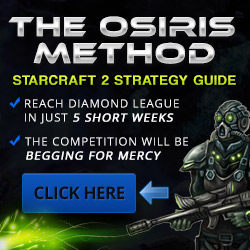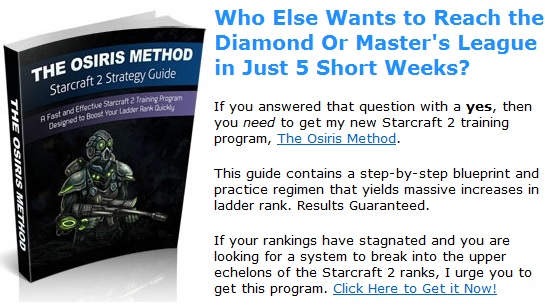Starcraft 2 Zerg vs Protoss StrategyHome --> Zerg Guide --> Zerg Strategy --> Zerg vs Protoss (you are here)
If you are struggling with ZvP or even if you win most games but want to get your win rate higher, then you have come to the right place. This guide to ZvP strategies contains tactics and tips for playing against Protoss as Zerg. It covers all portions of the match from the early game all the way to the late game. Zerg vs Protoss: Early Game StrategiesIn the early game, there often is not much the Zerg player can do in Protoss versus Zerg. Instead, the Zerg player often has no choice but try to work on their own economy and let the game transition into the late game. Response to the Forge Fast Expand The primary reason the Zerg player has no option against Protoss players in the early game is due to the Forge Fast Expand build. This opener has the Protoss player make an early Forge at their natural expansion, eventually walling off the entrance to their natural with buildings. A Photon Cannon is then tucked away behind this building wall. With the right set up, it is impossible for a Zerg to make an attack on the Protoss As a result, the only choice for the Zerg player is often to just work on expansions of their own. A good choice for the Zerg when you see the Forge go down, as this means the Protoss player is delaying Warp Gate Research until later in the game. Sometimes when Protoss players see the fast third Hatchery, they will cannon rush your third base. This cannon rush is okay, as saving up resources for Photon Cannons typically delays the Protoss more than cancelling the third delays the Zerg. Response to Gateway into Expansion With the Gateway into expansion build, the Protoss player is initially a bit more vulnerable, but ultimately is in a position to make an attack versus the Zerg. Zerg players can decide to go one of two routes when they see a Gateway into an expansion build: they can make a Zergling-heavy attack and try to break down the Protoss wall or they can go for a third base of their own and try to macro hard before the Protoss gets out Warp Gate Research. Even if you do want to ultimately go for a fast third base, it is often wise to place your Spawning Pool and start Metabolic Boost (i.e. get gas) before starting the third Hatchery. Zerglings with Metabolic Boost offer the Zerg map control and can help shut down any early attacks against your third base. Use these Zerglings to scout and pick off proxy Pylons as well. Stopping Early Rushes While most Protoss players open with the FFE or a Gateway-first expansion build, a few knuckleheads (particularly in the lower leagues) will rush with Zealots. Grabbing a fast expansion actually helps against early Zealots, as two bases means two Hatcheries for unit production. You can be making two Queens at once as well as have more Larva for Zerglings. Be sure to build a few Spine Crawlers if the Protoss player has truly gone for an early Zealot rush. Use Zerglings and Queens to protect those Spine Crawlers while they are under construction. Just a Spine Crawler or two at each base can be plenty to protect yourself from a Zealot rush. Zerg vs Protoss: The Mid GameAs we enter the mid-game, the Zerg player is now finally in a position to attack the Protoss player. Likewise, the Protoss player is now likely to be in a position to make a major attack on the Zerg player. Below, we will discuss how to counter the two most common Protoss pushes against Zerg and which army compositions work well against Protoss in the mid game. Dealing With Immortal/Sentry Timings Going for a timing attack consisting primarily of Sentries and a couple of Immortals is a tried and true Protoss strategy to use against Zerg players. Extra minerals are spent on Zealots in this attack. If this attack hits on the earlier end, the Zerg player may only be on Hatchery tech when it arrives. The best way to deal with this as Zerg is to try to not get hit by an attack before getting up to Lair tech. Once on Lair tech, you can make either Hydralisks or Swarm Hosts. Both are excellent unit choices against the Immortal and Sentry combination. If you need to buy time for yourself, consider adding on a few Spine Crawlers at the entrance to your natural expansion. Stopping Protoss Air in the Mid Game The Protoss Gateway-first style expansion often leads into Gateway and Stargate-based timing attacks. The Protoss makes either Phoenix or Void Rays and backs those up primarily with Zealots and a sprinkling of Sentries or Stalkers. The Protoss tends to use mostly Zealots though for this purpose as vespene needs to be saved for the air units. Against Phoenix, you must get at least 2 Spore Crawlers at each base. Phoenix cannot hit ground units, so Spore Crawlers are the natural counter. Phoenix have a lot of native shields and health though, so 1 Spore Crawler at each base is typically not enough. Against Void Rays, try to add on an extra Queen or two at each base. Keep those extra Queens on the same unit key and use them directly to defend your base against enemy Void Rays. Void Rays are very weak versus the Queen. Viable Zerg Compositions in the Mid Game In the mid game of Zerg vs Protoss, most Zerg players stick to one of two unit combinations: Roaches and Hydralisks or Swarm Hosts. Roach/Hydra is a great combination as this early in the game you do not have to worry about being maxed out (the Roach is weak when supplies are maxed since it costs a lot of supplies). Roaches are the cheap damage sponges for the Hydralisk, while the Hydralisk can actually counter Gateway units, Stargate units, and Immortals. Another good option for Zerg players is to just mass Swarm Hosts. Be sure to set up a Swarm Host colony equipped with Spore Crawlers and Queens to help protect your Swarm Hosts from enemy air units. Zerg players often try to end the game at this point in the game. They use their Roach and Hydralisk or Swarm Host army to control the map and take several expansions while exerting this control. This huge economic lead can allow the Zerg to then crush the opponent by force. Zerg vs Protoss: The Late GameWhile the early and mid-game are often smooth sailing for the Zerg, Zerg players tend to really struggling against Protoss in the late game. It can be very difficult for Zerg to stop the dreaded Protoss Deathball as well as SkyToss unit compositions. Defeating the Protoss Deathball A Protoss deathball is a maxed out army consisting of some Colossi, High Templar and Gateway units. It can be possibly backed up by Void Rays or Immortals. This well-rounded army has large amounts of AoE damage and can quickly burst down an enemy's forces if they are slow to react. Zerg players looking to stop this build need to break down the deathball into several component parts. The easiest way is to think about what units counter the Hydralisk as well as which units the Hydralisk can counter. It turns out that Hydralisks are particularly weak against Colossi and High Templar but strong versus just about everything else. Add Vipers to the mix to Abduct Colossi into range of the Hydralisks and add Roaches or Ultralisks into the mix to help negate the effects of Psionic Storm (both units can easily absorb a full duration storm). Defeating Mass Protoss Air (SkyToss) Destroying a full 200/200 Protoss player who has almost entirely air units is very difficult. The easiest way is to just prevent the Protoss player from maxing out on air units in the first place, as this requires an insane amount of gas. You would have had to let the Protoss get away with a lot of greed in a game in order for a 200/200 SkyToss composition to be possible. Despite your best efforts, if you find yourself going up against a maxed out Protoss player using air units, you will want to try to add in some automated defense (Spore Crawlers) at your primary point of defense. Try to make the Protoss player engage not only your army but your automated defense for best results. Use Abduct to pull in long-range units within range of your Spore Crawlers for best results. Making an Attack Late in the game, a good army composition is mass Roaches and Hydralisks. Make sure to mix in Vipers so you can Abduct enemy Colossi. Other than that, you want to bank up a lot of extra Larva as well as resources before making an attack. After you make a major attack with your balanced Roach and Hydralisk army, you can then make all your Larva into a reinforcement wave of the particular unit or unit combinations that are strong against the remaining units of the Protoss army. Sometimes attacking directly is not the right choice. Instead, if you can use Zerglings or Mutalisks to attack unguarded (or relatively unguarded) enemy expansions over and over again, you can cause the enemy to forfeit the match. Use these harass attacks all game long to try to keep at least a 1 base lead over the opponent. Conclusion Zerg players often do struggle against Protoss, but the strategies on this page should tip the balance back in your favor. Just remember to be patient as Zerg - do not force the engagement if the Protoss is in a defensive position. When the Protoss opponent is being defense, expand and increase your income. Once you have a huge economic lead, you can afford to be more aggressive with your offensive strikes. |
Don't be shy - share this page on G+ and Twitter!
Sign up for my Free Starcraft 2 Mini-Course where I reveal my best strategies not seen anywhere on this site!
Starcraft 2 Strategy Guide Privacy Policy Contact Us Disclaimer
©2013 www.osirissc2guide.com

